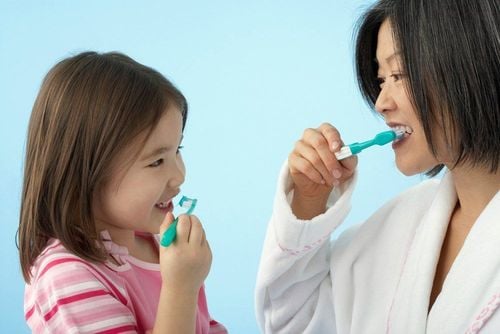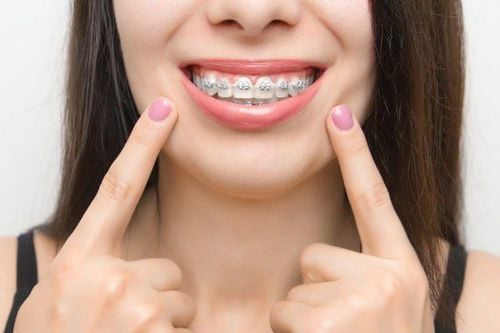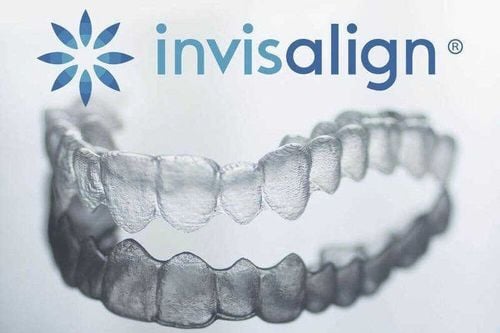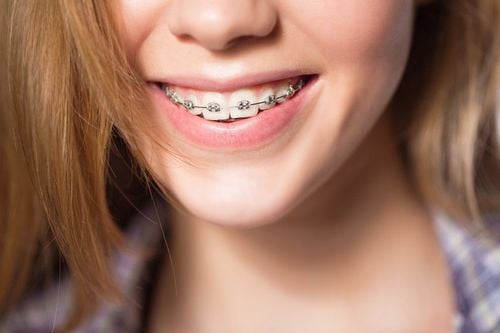This is an automatically translated article.
The article was written by the Doctor in charge of the Dental - Jaw - Facial Unit - Interdisciplinary Department - Vinmec Times City International General Hospital.
When your child loses their first few teeth, it's a pretty exciting time for them. The kids may feel proud knowing they're growing up, or even think they've just been visited by the tooth fairy and enjoyed it. When their baby's permanent teeth come in, parents may fear that their child's teeth will be misaligned.
1. Why do children's teeth grow out of alignment when they are replaced?
It is very common for children's permanent teeth to grow out of place. This is usually caused by genetic factors from families such as extra teeth, large teeth, missing teeth, wide or small arches, overbites, underbites..
These deviations can be combined by other factors. Children's habits such as thumb sucking, tongue thrusting, teeth grinding. Baby teeth play an important role in keeping the place for the permanent teeth to erupt in the correct position on the jaw. If baby teeth are lost early, it is likely that other teeth will come in and squeeze into the empty space. Poor airway caused by VA hypertrophy, the child often breathes through the mouth. The habit of lying on one side is prolonged. The result is crowded teeth and/or malocclusion.

Răng trẻ em bị mọc lệch do yếu tố di truyền
2. Some signs parents can recognize when children have teeth that are misaligned early on
See the teeth rotated wrongly, not in the right arch. Children often complain of pain on one side of the jaw. Or pain in the temporomandibular joint. The child's face is not balanced, the upper or lower jaw bone is too strong, the side looks too much forward or backward. Children are often bitten on the cheek. When biting the 2 jaws, the incisors do not touch each other (open bite first), the teeth are crowded, lack of space or there are many gaps between the teeth ...
3. To prevent and handle early cases of misaligned children's teeth, parents should take the following steps
Step 1: Visit the dentist regularly
From the moment your child has baby teeth, it is important for parents to take their children to regular visits with the dentist. Not only can your dentist help make sure your child's teeth stay clean, but they can also keep an eye on the permanent teeth. If they notice some teeth are not coming in straight, they can refer you to an orthodontist for early examination and early intervention if needed.
Step 2: Fix bad habits
Bad habits can affect teeth and jaws during development that you need to pay attention to:
Perennial pacifiers Sucking fingers or biting nails, biting pens.. Mouth breathing for a long time Habit of pushing tongue when swallowing, speaking, Eating and chewing on one side Lying on one side for a long time
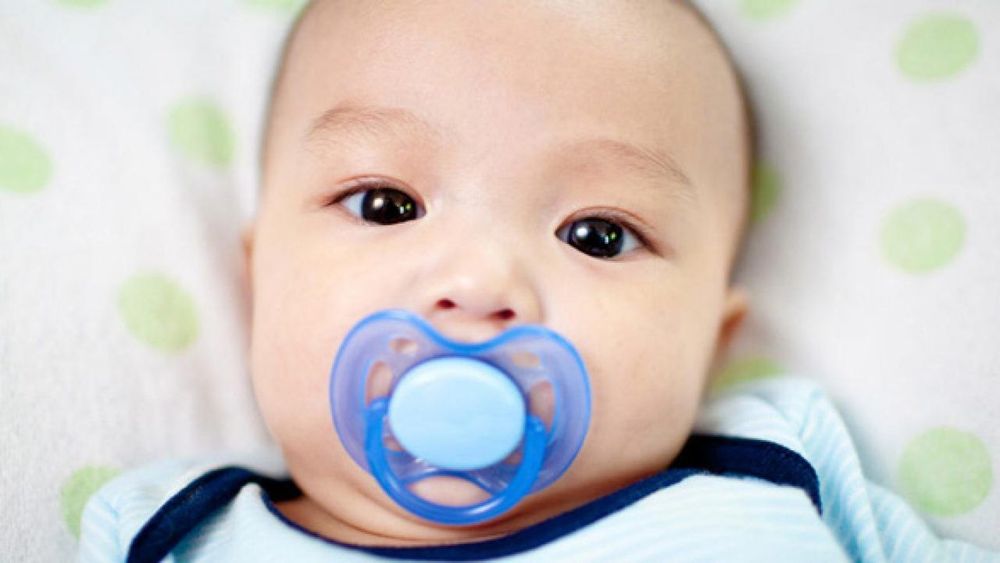
Núm vú giả lâu năm có thê gây ảnh hưởng đến răng
Your dentist can help you identify and correct bad habits that can prevent teeth from growing straight. For example, pacifiers can be a great way to soothe a baby and even provide health benefits for babies. However, by the age of two, you should wean your child from pacifiers, to avoid being the cause of the incorrect position of teeth and jaws.
Another big cause of misaligned teeth is thumb sucking. While this may seem like a safe and natural alternative to pacifiers, the American Academy of Pediatric Dentistry (AAPD) recommends pacifiers instead of thumb sucking. One of the main reasons for this is that it's much easier to control your baby's pacifier use than it is to prevent them from sucking their thumb.
The best way to identify bad habits and create a plan to correct them is in conjunction with a consultation with a dentist. They will have a lot of experience in helping children gradually change their habits and grasp the child's psychology and know how to encourage them to change.
Step 3: Monitor tooth development
Some children will have their permanent teeth erupt (break the gums) in a very misleading way. Erupted teeth may appear horribly misaligned during the early stages of growth, but sometimes teeth will repair themselves once they have fully erupted. Therefore, if at first when seeing their child's permanent teeth after being replaced, they do not need to be too alarmed. Again, regular visits to the dentist are necessary. Dentists will provide additional insight into any needed treatments.
Step 4: See an orthodontist
If your visiting dentist refers you to an orthodontist, then you should definitely take your child in. The sooner your child sees an orthodontist, the sooner you can start treatment if necessary. Starting treatment early makes it easier and less expensive to correct a child's bite. The explanation for this, of course, is that the orthodontist can start fixing things when children have small problems, rather than waiting until they become big problems.
For this reason, we recommend that children first visit an orthodontist around the age of 6-7. Mature teeth have begun to erupt and the orthodontist can assess whether early treatment is needed to prevent future major treatments.
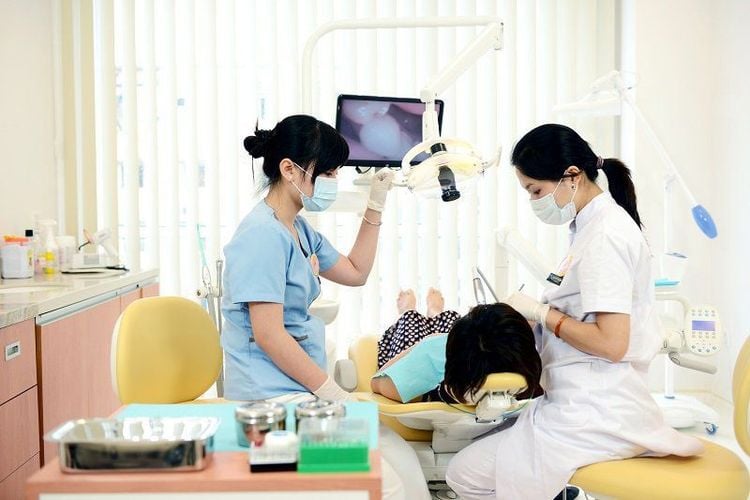
Đến khám với bác sĩ chỉnh nha để nhận được phương pháp điều trị phù hợp
Step 5: Two-stage orthodontic treatment
For children who have signs and risks affecting the bite, or need a lot of space for the teeth to fully grow, the orthodontist will advise 02 stages:
The first stage of treatment (pre-orthodontic treatment). Brackets, or removable, immobilized appliances, and facial aids may be used on a case-by-case basis. The first stage of treatment begins early, while the child still has many or most baby teeth. Fixed braces may or may not be used during this initial stage of treatment, and the orthodontist will likely have your child wear a removable orthodontic appliance during this early stage. Certain appliances can be used at an early age to limit habits, making orthodontic treatment easier and quicker when your child is younger. For example, a “Tongue Blocker” appliance helps to reduce tongue movement or prevent thumb sucking that can cause crooked teeth. The “Jaws Expander” appliance is very helpful in creating space for new teeth or correcting the bite...
The second stage of treatment occurs when the child already has most or all of the permanent teeth. During this period, fixed appliances such as brackets are almost certainly used to correct crooked teeth and correct malocclusion. Braces treatment usually lasts between 18-36 months. It is important for your child to take good care of their teeth and adhere to their braces, because the better they are kept, the less time it will take for orthodontic treatment.
Invisalign clear braces
This is a method that appeared in recent years, replacing traditional braces, increasing aesthetics and the ability to keep oral hygiene. Invisalign is a modern and highly aesthetic method of straightening teeth. The trays are made of transparent material, which is installed on the child's jaw with force points to bring the teeth into the desired position.
On average, each aligner tray must be worn for 22 hours, removable for chewing and cleaning the trough.
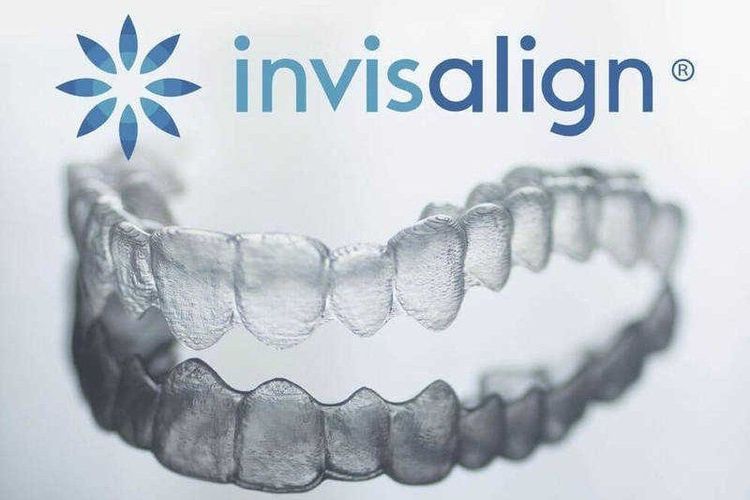
Điều trị bằng phương pháp niềng răng trong suốt Invisalign
Thus, understanding the causes, recognizing the signs of misaligned teething in children will help parents know the directions for treatment, prevention and early treatment in cooperation with dental doctors.
Customers can directly go to Vinmec Health system nationwide to visit or contact the website for support.
Please dial HOTLINE for more information or register for an appointment HERE. Download MyVinmec app to make appointments faster and to manage your bookings easily.




